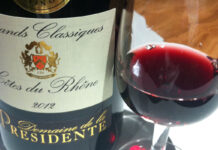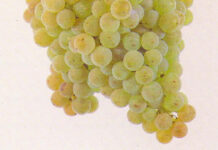Luke Richardson is a sommelier who has worked in a range of venues across the UK in a career spanning more than 20 years. He is now wine buyer/cheese fanatic at IJ Mellis Cheese. In his column for SLTN he shares his thoughts on all things wine-related and answers your questions about wine. If you have a question for Luke email it to sltn@peeblesmedia.com

Hi again all.
This time around I thought I would look a little at how to have a balanced wine list. By balanced, I’m referring mostly to the style of the wines themselves, but it is obviously also important to offer as many different price points as possible. It stands to reason that the environment within which you operate has a massive impact on the size of your list but, to be able to offer some sort of choice that will appeal to the majority of people, I would suggest that 10 bins is the minimum.
This would be made up of one sparkling wine, four whites, one rosé and four red wines. In a restaurant environment, I would also add one dessert wine.
So which styles are we trying to hit in the white and red categories to ensure maximum tastes are covered? Let’s start by looking at the white wines.
Ideally you will have a light, dry, high-acid white with a bit of fruit – something like a Vinho Verde, a Sauvignon Blanc or a (dry) Riesling. These are normally fairly simple wines, and people who drink them are really just looking for something pleasant and refreshing – no need for any sort of complexity here. Next you would want a slightly fleshier, slightly less crisp style – think Albariño, Grillo, Cortese (grape of Gavi and Lugana) – even a very ripe fruited NZ Sauvignon Blanc would do. Third would be a lower acid wine again, richer in the mouth but not obviously oaked – things like Viognier, Fruliano, a Chardonnay with well-integrated oak but showing some nice fruit (often referred to as “Burgundian” in style), and lastly a big, rich, heavily-oaked style – more often than not a New World Chardonnay.
For reds, it is a similar proposition, although here it is not so much about acidity but tannin levels. In an ideal world you would have a light bodied red – think Pinot Noir or Gamay, a medium bodied red such as a lightly oaked Merlot or a Côtes du Rhône, and two full bodied reds – one Old World and one New World. Why? Essentially, the Old World (ie European) wines are less fruity and one notices the structure more, and the New World wines are normally the inverse of that – more fruity and seemingly less structured.
This comes down to an age thing – generally, a younger palate prefers fruitier, more accessible wines whilst an older palate prefers a little bit more reserved fruit and some more savoury flavours on the finish.
When it comes to pricing, it is always good to try to offer as many different price points as possible, but it is also important that you remember that the most popular styles mentioned above are the light and crisp white and the two full bodied reds.
So I would try and place the light and crisp white as the second least expensive white and the full bodied reds as second and third least expensive. First place should always be reserved for your house wine, which, hopefully, will be your major GP winner!
Until next time, happy listing!



















